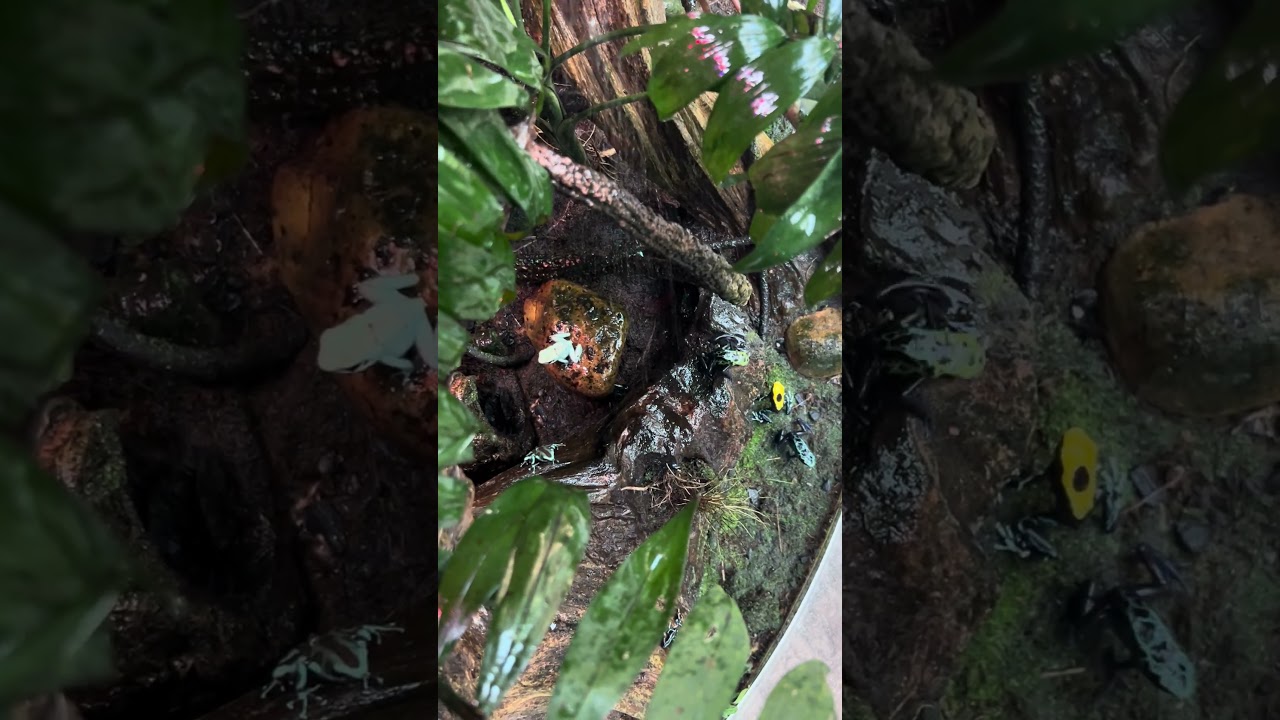- Introduction to the Audubon Aquarium’s dart frogs and their unique auditory and visual characteristics.
- An in-depth look at the different species of dart frogs housed at the Audubon Aquarium.
- The role of dart frogs in their natural ecosystems.
- The significance of acoustic communication in dart frogs.
- Conservation efforts for dart frogs and the importance of zoo-based breeding programs.
Located in New Orleans, the Audubon Aquarium is home to various dart frogs, each with a distinct sound and vibrant color. These tiny amphibians may look delicate, but they play a crucial role in their ecosystems. Let’s delve into the fascinating details of these captivating creatures and their significance in the natural world.
The Audubon Aquarium boasts diverse dart frogs, including the Green and Black Poison Dart Frog, the Dyeing Dart Frog, and the Blue Poison Dart Frog. Each species has unique traits and behaviors, making them a captivating exhibit for visitors. The Green and Black Poison Dart Frog (Dendrobates auratus) is known for its contrasting colors and striking patterns. The Dyeing Dart Frog (Dendrobates tinctorius) often exhibits bright colors like yellow, blue, and white, while the Blue Poison Dart Frog (Dendrobates azureus) displays mesmerizing shades of blue.
Dart frogs are not just visually arresting but also known for their acoustic communication. These amphibians use vocalizations to establish territory, attract mates, and communicate with other frogs. The calls of dart frogs vary significantly among species, from short, soft trills to long, loud calls. This diversity in vocalization is essential for their survival, allowing males to attract females and warn off other males. Different environmental factors, such as temperature and humidity, can also affect their calling patterns and frequencies. By analyzing these calls, researchers can gain insights into the health and behavior of dart frog populations in captivity and the wild.
The role of dart frogs in their natural habitats cannot be overstated. These amphibians are vital for maintaining the balance of their ecosystems. As predators and prey, they help control insect populations and provide food for other animals. Their brightly colored skin warns predators of their toxicity and is a brilliant example of aposematism—a survival strategy where conspicuous colors signal danger. The toxins produced by dart frogs, derived from their diet in the wild, have also sparked interest in medical research for their potential applications in pain management and heart disease treatment.
Acoustic communication is a critical aspect of dart frog behavior. The males typically produce calls to attract females, each species having a distinctive call. These calls serve reproductive purposes and help maintain the social structure within frog populations. Females often select mates based on the quality and frequency of their calls, indicating the males’ fitness and genetic suitability. Understanding these vocal patterns can aid conservationists in developing strategies to support breeding programs and ensure the sustainability of these species.
Conservation efforts for dart frogs are paramount, given the significant threats they face in the wild. Habitat loss, climate change, and pollution severely impact their populations. Captive breeding programs like those at the Audubon Aquarium are essential for the survival of these species. By replicating natural habitats and carefully monitoring environmental conditions, zoos can successfully breed and raise dart frogs, boosting their numbers and genetic diversity. Education and awareness programs also help engage the public in conservation efforts, fostering a greater appreciation for these remarkable amphibians.
In summary, dart frogs at the Audubon Aquarium offer a unique opportunity to observe and learn about these fascinating creatures. Their vibrant colors, distinctive calls, and ecological importance highlight the need for continued conservation efforts. By supporting these initiatives, we can each play a part in preserving the delicate balance of our ecosystems and the incredible diversity of life they support. Listen to the amazing sounds of Audubon Aquarium’s dart frogs and appreciate the intricate beauty and significance of these tiny but mighty amphibians.
*****
Source Description


